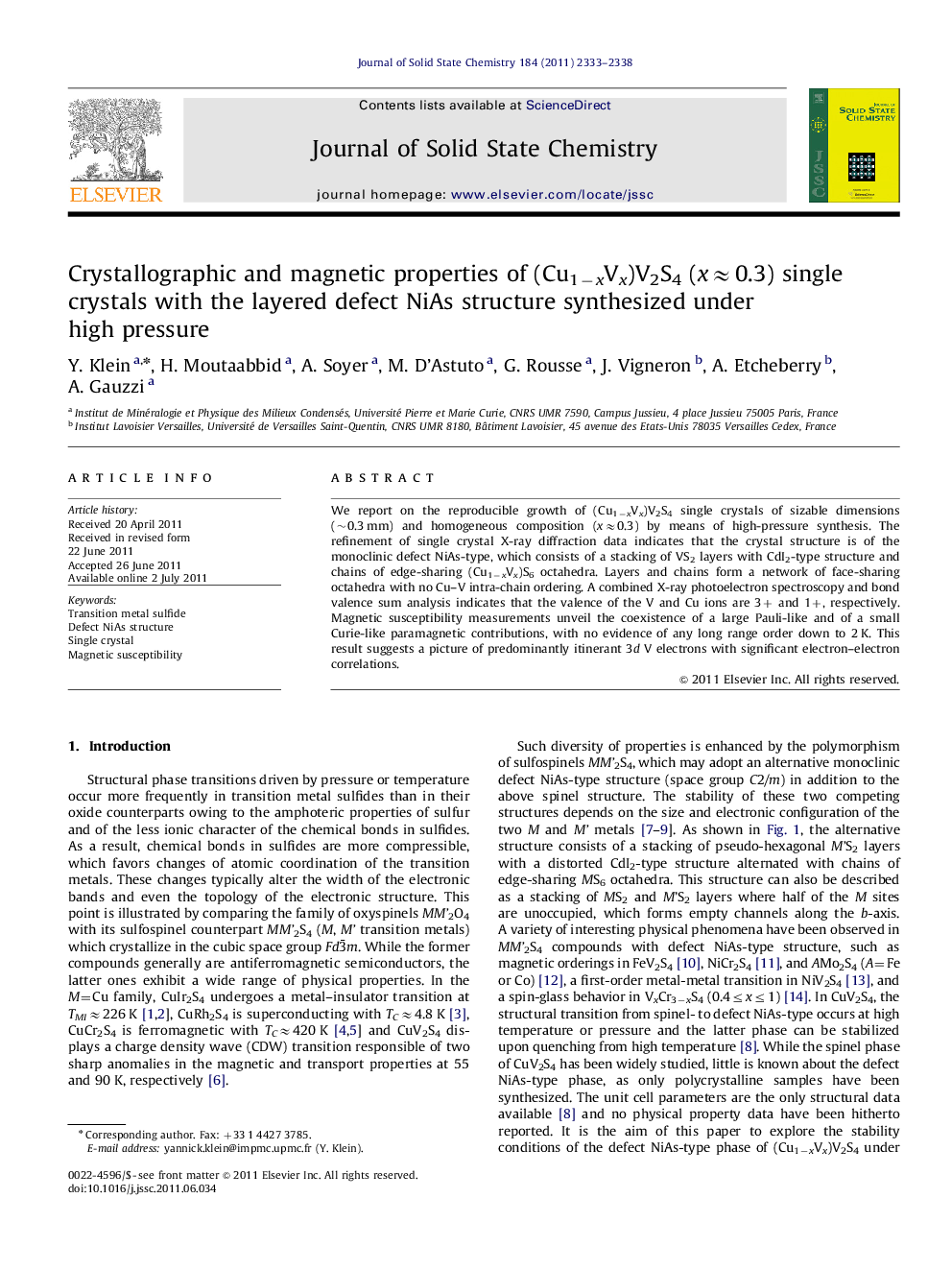| کد مقاله | کد نشریه | سال انتشار | مقاله انگلیسی | نسخه تمام متن |
|---|---|---|---|---|
| 1329061 | 978879 | 2011 | 6 صفحه PDF | دانلود رایگان |

We report on the reproducible growth of (Cu1−xVx)V2S4 single crystals of sizable dimensions (∼0.3 mm) and homogeneous composition (x≈0.3) by means of high-pressure synthesis. The refinement of single crystal X-ray diffraction data indicates that the crystal structure is of the monoclinic defect NiAs-type, which consists of a stacking of VS2 layers with CdI2-type structure and chains of edge-sharing (Cu1−xVx)S6 octahedra. Layers and chains form a network of face-sharing octahedra with no Cu–V intra-chain ordering. A combined X-ray photoelectron spectroscopy and bond valence sum analysis indicates that the valence of the V and Cu ions are 3+ and 1+, respectively. Magnetic susceptibility measurements unveil the coexistence of a large Pauli-like and of a small Curie-like paramagnetic contributions, with no evidence of any long range order down to 2 K. This result suggests a picture of predominantly itinerant 3d V electrons with significant electron–electron correlations.
Graphical AbstractCrystallographic structure of (Cu0.69V0.31)V2S4. For clarity, the octahedral environment of (Cu0.69V0.31) site is not shown .Figure optionsDownload as PowerPoint slideHighlights
► Synthesis of new single-crystals in the Cu–V–S system using high pressure and high temperature.
► Structural analysis revealed the single-crystals to be of the defect NiAs-type structure.
► Bond valence sum analysis combined to X-ray photoemission spectroscopy revealed Cu1+ and a majority of V3+.
► Magnetic susceptibility has been measured.
► Charge carriers are of two types, localized and itinerant.
Journal: Journal of Solid State Chemistry - Volume 184, Issue 9, September 2011, Pages 2333–2338